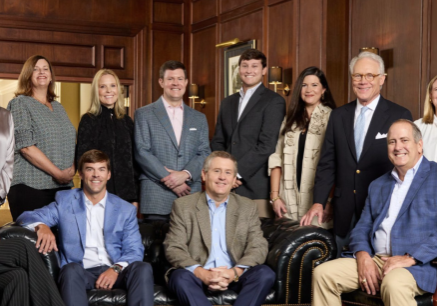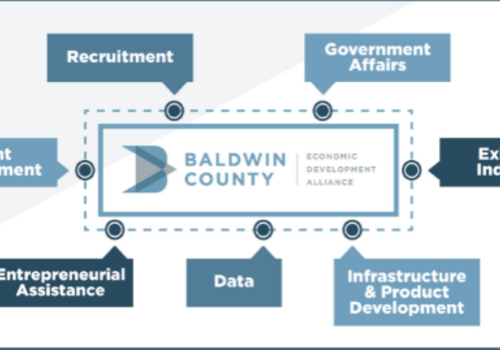Behavioral Science Professor Offers Theories for Keeping Employees Motivated in a Post-Pandemic Economy

By Dr. Rick Fenwick, Columbia Southern University
When COVID-19 arrived in 2020, the number of business owners working in the U.S. decreased abruptly from 15 million to 11.7 million between February and April 2020.[1] The decrease of more than 3 million working business owners is the largest ever recorded.[1] To make matters worse, the number of hours worked by business owners dropped 29%, illustrating that the problem was only getting worse.[1]
Organizations and small-business owners everywhere struggled with staying open during lockdown, retaining employees, updating working conditions, changing hours of operation, making a profit and staying motivated amid a mentally draining situation.
Years later, business owners are still recovering from an unprecedented downturn, struggling to resolve lingering issues from the pandemic including employee turnover, inflation, a struggling economy, making a profit and staying motivated. While it can be challenging to address these issues and balance motivation and salary demands, there are some motivational theories that could help business owners navigate these difficult times.
A gap analysis is valuable for owners when they may not realize what the exact problems are with a specific workplace issue.
Gap Analysis
A gap analysis is helpful for business owners who are stuck and trying to identify where they need to go for the business to be successful in the future. This model focuses on current state versus ideal state. The business owner evaluates an area of the business, such as the culture of the work environment, and identifies where the workplace currently sits.
Then, the owner identifies what the ideal culture would look like. Owners can assess what needs to change in order to move from the current state to the ideal state. Examples might include changing working conditions, updating shift times, providing break opportunities, etc. A gap analysis is valuable for owners when they may not realize what the exact problems are with a specific workplace issue.
SMART Goals
SMART is an acronym for specific, measurable, achievable, relevant and time-bound. This is helpful for owners and employees who struggle to achieve specific goals and tasks in the workplace.
Imagine that a donut shop owner wants to sell more donuts. The owner can use SMART goals to help determine the best path for accomplishing this. The owner would start by identifying a goal statement, “Sell more donuts.” Then the owner uses the SMART acronym to break down that overall goal statement into achievable components:
- Specific – Sell $2,000 worth of glazed donuts. (Glazed donuts are a popular choice among customers
- and require the least amount of overhead to bake.)
- Measurable – We can measure how many glazed donuts are sold and use that quantity to determine if
- the monetary goal was achieved.
- Achievable – Baking enough glazed donuts each day to sell $2,000 worth is achievable.
- Relevant – This goal is relevant because selling $2,000 each day ensures I make a profit.
- Time-bound – This is a daily goal.
Now, the owner can use the information from the SMART method to create a specific, measurable, achievable, relevant and time-bound goal: Sell a minimum of $2,000 worth of glazed donuts every day for a total of $14,000 of glazed donuts each week.
.
Needs Flow Model
In positive psychology, there is the Needs Flow Model, coined by Mihaly Csikszentmihalyi in 1970. This model refers to when a human is completing a task and is completely enamored with the process, including a high level of focus, positive energy and time passed. People who run for exercise sometimes refer to this as a “runner’s high.” The results from being in this flow are typically well-received, as the person usually accomplishes the task and enjoys the process while doing so.
For someone to be in the flow, they need to create a desirable work environment and condition themselves to it. As an example, when I walk into my office at home, I turn on the lights, shut the door and turn on classical music. This lets my brain process the fact that “I am in my office, and I am here to work.” When I want to take a break, I leave my office completely, for example, going into the kitchen to grab a snack or the living room to watch a sports highlight. This conditions my brain to understand that my office is a dedicated space for completing work-related tasks, which helps immensely in creating that flow.
Gordons’ Learning Ladder
Gordon’s Learning Ladder is great for helping people learn new tasks, processes and organizational skills. This theory consists of four levels of learning:
- Unconsciously Incompetent – Person is lacking and is unaware of how they are lacking.
- Consciously Incompetent – Person is struggling, but they realize the errors they are making.
- Consciously Competent – Person is doing well, but they have to think about each step of the
- process before performing well.
- Unconsciously Competent – Person is performing very well and it has become routine wherethey do not think about it before performing.
When organizations hire new employees, they typically do not know every element of the organization and the specific job they are hired to perform. The employee has a general understanding, but everything is new to them when starting on the job. The new employee is at that unconsciously incompetent level where they make mistakes and are not even aware of the mistakes they are making. As the employee becomes more comfortable with the job, they move to consciously incompetent, where they are making mistakes, but realize the errors that take place and focus on improving upon those tasks.
As the employee moves to consciously competent, they are completing everything efficiently, but they still have to think about each task and what they are doing before performing. With practice, training and repetition, the employee moves into the unconsciously competent level, where the employee is performing at a high level without having to think about it beforehand.
The owner wants everyone to be at the fourth level where the entire organization is performing at a high level without even thinking about it, but it takes time and practice to get everyone to that level. Once achieved, employees have become motivated and can stay positive, particularly if they are challenged to learn more and grow on the job and reap rewards for their efforts. Workers could also help business owners improve motivation where possible. In the last few years, business owners have gone through treacherous times with the pandemic, employee turnover increasing and motivation decreasing. While it can be stressful enough running an organization, it can be just as challenging navigating these obstacles and finding ways to retain employees and keep the work environment positive and motivational. These motivational theories can help business owners find ways to stay motivated and produce at a more effective rate.
About the Author
Dr. Rick Fenwick serves as the academic program director for the behavioral sciences at Columbia Southern University (CSU). He has a doctorate in industrial and organizational psychology from Capella University and is a partner at Fenwick Training & Development, LLC, in Novi, Michigan. He has worked as an organizational consultant since 2001, conducting customized training programs for manufacturing, customer service and union organizations.
About Columbia Southern University
As an innovator in online education for more than 30 years, CSU was established to provide an alternative to the traditional university experience. Based in Orange Beach, Alabama, CSU offers online associate, bachelor’s, master’s and doctoral degrees in fields including business administration, criminal justice, fire administration and occupational safety and health. Visit ColumbiaSouthern.edu or call (877) 347-6050 to learn more.
Sources
[1] Fairlie, R. (2020). The impact of covid-19 on small business owners: Evidence from the first three months after widespread social distancing restrictions. Journal of Economics & Management Strategy, 29(4), 727-740. doi: 10.1111/jems.12400
Read More
Subscribe to our weekly newsletter
Sign up here for free to get Bay Business News email newsletter every Friday.
By subscribing, you agree to our User Agreement and Privacy Policy & Cookie Statement.











